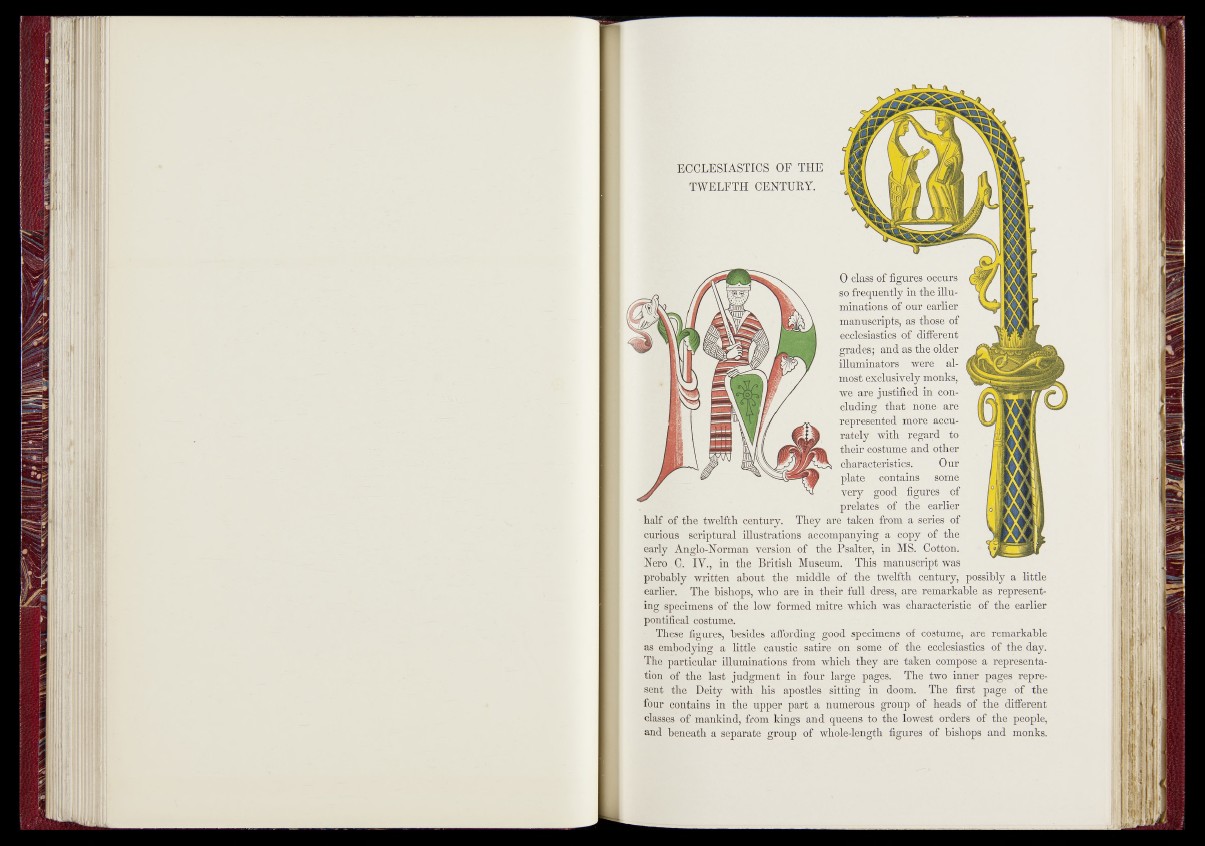
TnE
I W Ê S K B Ê Ê Ê K K M
so frequently in the illuminations
of our earlier .
TOiuuii^oinjjt^^Lisftre^^ofjl
illuminators were almost
exclusively monks,
ifi
eluding that none are
Epc[pes( pt(^l»t§^M|accu- |
rately with regard to
their costume and other
Our I
plate contains some
very
^mdiites the» qMie^|
half of -the twelfth century. taken!’ frfWra^m p ^ of-|
cùribus scriptural Illustrations i • ■ • ■' n ■ p i iî\ i n g
early Anglo-Norman vèrsio*if qf; the Psal1- r. in M
NBro^Cj. IV., in1 tlje, British l^ ^ p lin ^ , This h'iaM^wpt-.Vas |
probably f a t t e n about f|fi .niiddh .pljp f c ‘j >r ln'i i_mui\, j ■ »-—il»l\ a little
earlier. The bishops, who - are - in :fln ir fulPdres^aiih remarkable, as represent:
ing specimens of the lovr.forxheiih^Bftbich vas clia-^^gjstic of the \ ^ B K
pontifical costume.
, These figures, besides affording pbb.d*,,^pecimcn^^f*cpstume, are; remarkable
as einbodying a litSlG ^caustic. satire on sonje of [the ecclesiastics,, of .the, day*
The particular UluzninatiOns from vhich JljeyVare takeii'-cbinp^jia representation
c®|tKe , last judgment in four large pages The two inner pages represent
the Deity,, with Thil^apostles‘, si®mgk in ^oan^? The first page pf.^the
fou^, contains in /tbe upper part’ a n im e toV ^E ^ p 'F o ^M S ra o f.th e different
classes of mankind, from king:, and queens to the lower-1 orders of, the" people,
and beneath a separate group of whole-length figures of bishops'and monks.